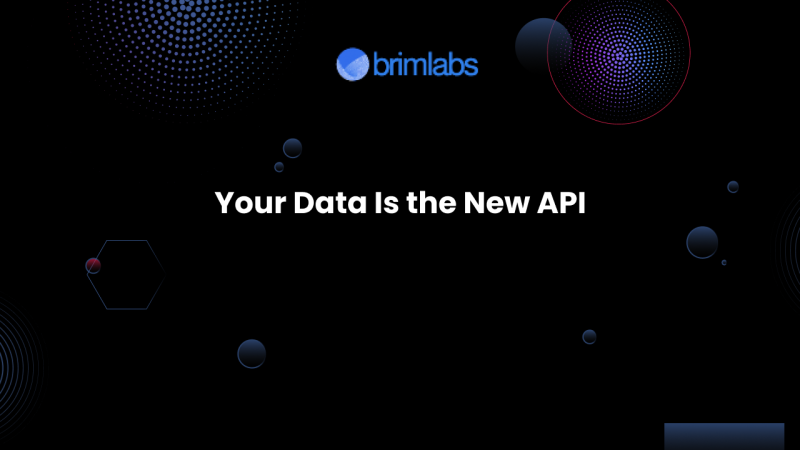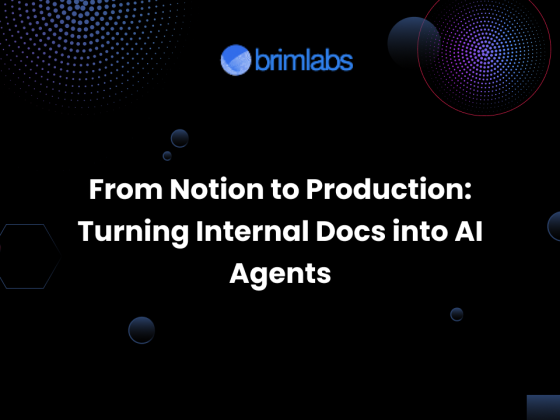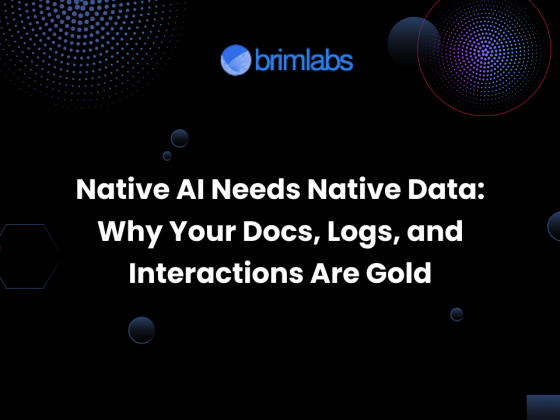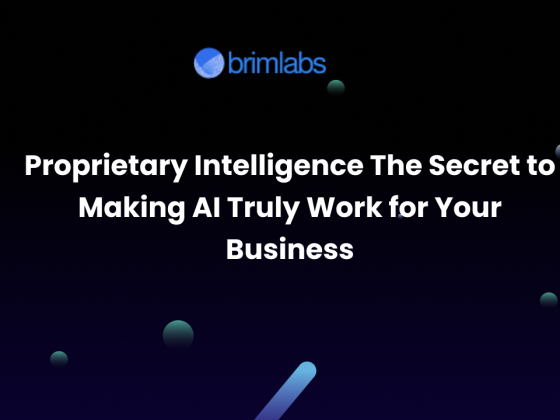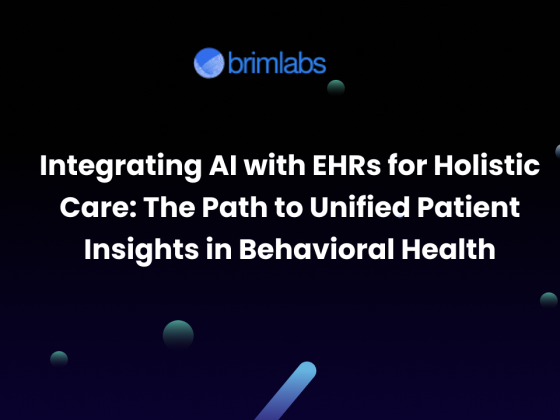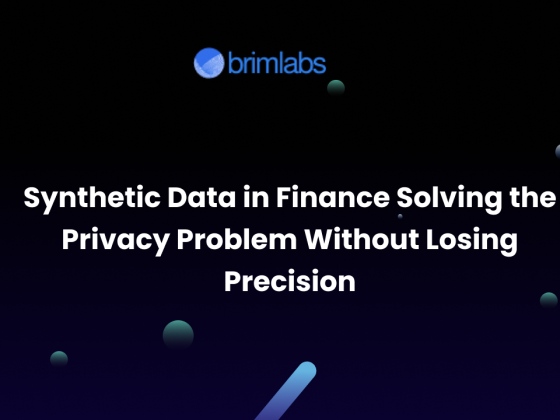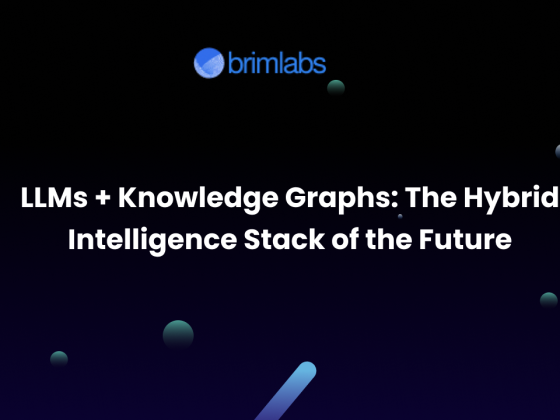APIs once revolutionized software by making systems programmable. Now, internal data is stepping into that role. In 2025, AI agents are not just answering customer queries; they’re becoming internal copilots, capable of interfacing with your data stack, surfacing insights, and even triggering workflows.
Think of your knowledge base, support tickets, SOPs, and dashboards. What if all of it could talk back? What if your internal data became as programmable as an API?
That’s the promise of AI agents trained on internal data, and why forward-thinking companies are using them to streamline ops, boost team productivity, and reduce software fragmentation.
1. From APIs to Internal Intelligence: A Paradigm Shift
APIs made systems talk to each other. Now, AI agents make systems talk to you, using your own language and context.
Instead of querying APIs or switching dashboards, teams can interact with an intelligent agent that understands:
- Your customer support playbooks
- Your operational workflows
- Your product FAQs and release notes
- Your financial SOPs and compliance protocols
The result: a single point of interaction for knowledge, insights, and actions, all grounded in your own data.
2. Your Internal Data Is Richer Than You Think
Most organizations are sitting on gold mines of internal data:
- Notion pages, Google Docs, and Confluence wikis
- Slack messages, CRM notes, and support tickets
- Sales playbooks, compliance protocols, and onboarding guides
Traditionally, this data stays buried across silos. AI agents trained using RAG and vector embeddings can ingest this data and turn it into structured, queryable knowledge.
Fact: In 2024, enterprise teams reported spending over 30 percent of their time just searching for information internally. AI agents reduce that time to seconds.
3. AI Agents as Interfaces: Conversational Workflows
With internal data transformed into embeddings and linked via vector databases, agents can now:
- Answer team-specific questions with citations
- Summarize meeting notes or knowledge bases
- Trigger workflows like creating tickets, assigning tasks, or generating reports
- Explain compliance guidelines, operational SOPs, or historical performance metrics
This changes the way teams interact with tools:
Old Way: Open dashboard → run report → format → explain
New Way: Ask agent → get formatted insight + context in one go
4. Behind the Scenes: How It Works
To turn internal data into a programmable layer, here’s the stack typically involved:
- Document Loaders: Pull data from Notion, Confluence, PDFs, etc.
- Chunking + Embedding: Break documents into digestible vectors
- Vector DB: Store embeddings for semantic search (e.g., Pinecone, Weaviate)
- RAG Pipeline: Retrieve relevant chunks + feed them into LLMs
- Orchestration Layer: Tools like LangChain or LlamaIndex for chaining tasks
- UI Layer: Chat interface embedded into internal tools or portals
This architecture turns every internal document into a piece of accessible, intelligent memory.
5. Use Cases Across Teams
Sales: Ask for the latest win/loss patterns, get competitive battlecards instantly.
Support: Summarize issue trends across tickets or suggest resolution paths.
Finance & Ops: Explain compliance workflows or summarize procurement policies.
HR: Answer onboarding, policy, or benefits questions for employees.
Engineering: Ask about API usage patterns, tech stack decisions, or incident history.
Each department gets a domain-specific assistant without building new apps.
6. Why Companies Are Adopting This Now
- Explosion of unstructured internal data in tools like Notion, Slack, and Google Docs
- Cost-effective AI infrastructure: Vector DBs + open-source orchestration tools
- Advancement of LLMs: Agents can now reason, not just retrieve
- Security-conscious deployment: On-prem options and permission-aware retrieval
Stat: According to a 2025 Stack Overflow survey, 48 percent of developers now use internal AI copilots to access documentation or SOPs faster than traditional search.
Real-World Examples: How Brim Labs Helped Clients Build Internal AI Agents
- Fintor: AI Agent for Mortgage Ops
Brim Labs partnered with Fintor to modernize their legacy mortgage operations. Using RAG, LangChain, and a Pinecone-based stack, we built an internal AI agent that automated document review, retrieved regulation-specific insights from policy documents, and surfaced real-time updates across underwriting workflows.
Outcome: 60 percent faster processing, improved compliance visibility, and reduced manual effort across the mortgage lifecycle. - Clinica AI: Medical Knowledge Agent for Care Teams
For Clinica AI, we transformed static SOPs, treatment guidelines, and patient care policies into a conversational AI assistant accessible to doctors and care coordinators. The system could answer queries about protocol updates, flag missing documentation, and suggest next-best actions based on internal knowledge.
Outcome: Reduced dependency on siloed portals and improved information access across frontline teams.
7. The New API Mindset: Your Knowledge Stack as a Platform
APIs made systems programmable. AI agents make knowledge programmable.
You no longer need rigid interfaces for every tool. AI agents can sit atop your internal data, understand nuance, and act on your behalf.
- The next generation of internal tools won’t be dashboards.
- They’ll be intelligent agents sitting between your data and your teams.
Final Thoughts:
If you’re still thinking of internal tools as static dashboards or outdated wikis, it’s time to upgrade that mental model.
At Brim Labs, we help companies transform internal data into intelligent copilots using RAG pipelines, vector databases, and enterprise-grade AI orchestration. Whether you’re in finance, SaaS, healthcare, or compliance, your internal data is your new API. And we know how to activate it.
Want to turn your internal docs into agents?
Let’s co-build your internal AI layer in under 8 weeks, that too on a cost-sharing basis. Explore what’s possible: Link to Calendar

